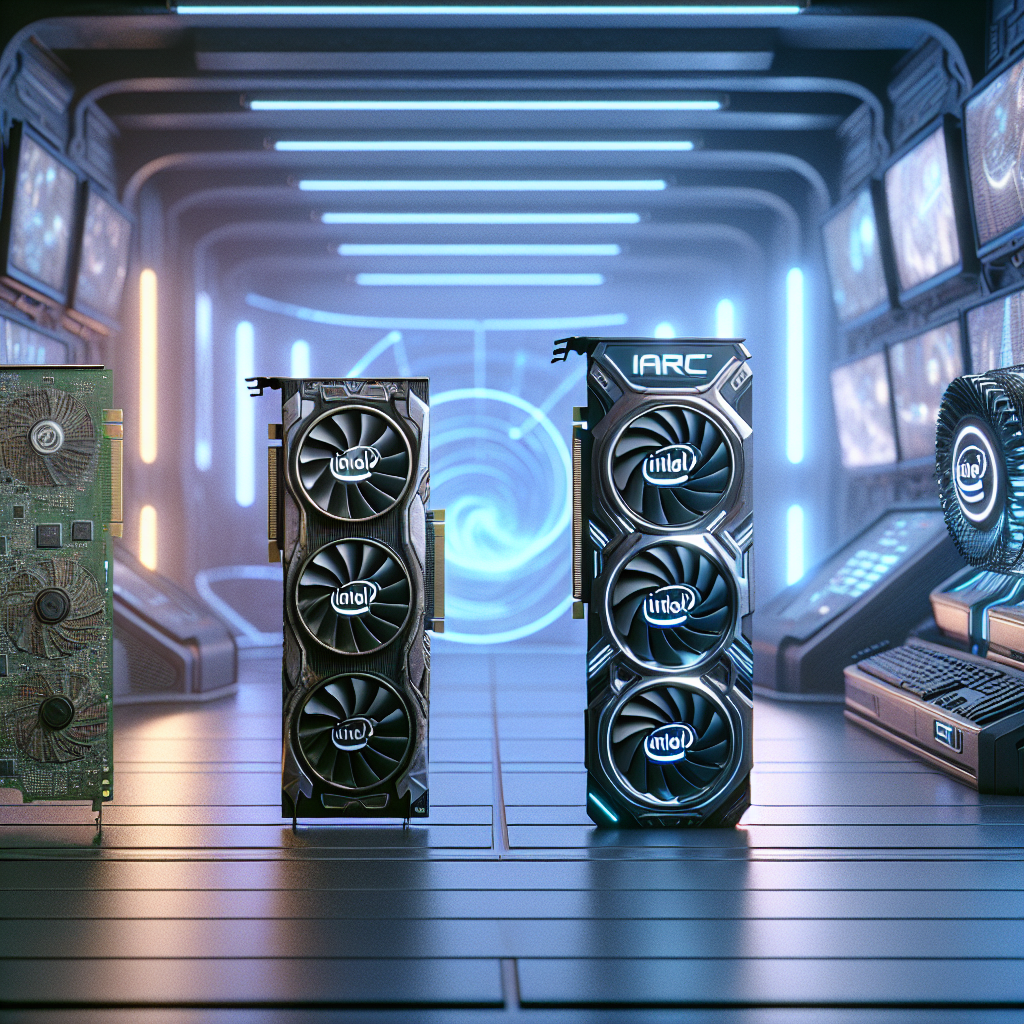The Evolution of Intel’s Arc Graphics Cards and the Impact of Driver Updates
We’ve witnessed the remarkable evolution of Intel’s Arc graphics cards since their debut in 2022. These GPUs have undergone significant performance enhancements, largely attributable to the consistent release of driver updates. The importance of these updates cannot be overstated, as they have been instrumental in unlocking the full potential of the Intel Arc Alchemist series, demonstrating the dynamic nature of modern graphics technology.
Image credit: Future
Testing the Intel Arc A770 16GB Graphics Card
To evaluate the performance enhancements brought by driver updates to the Intel Arc A770 16GB graphics card, a mid-range PC setup was utilized. This system included a PCIe 4.0 x16 slot, a 13th-gen Core i5 CPU capable of boosting up to 4.6GHz, 16GB of RAM, and Windows 11. A notable feature of this setup was the activation of Resizable BAR in the BIOS, a critical factor for optimizing the performance of Arc cards.
For the purpose of comparison, two sets of drivers were tested: the launch drivers from October 2022 (version 101.3940) and the latest drivers available at the time of writing, version 101.4952.
Image credit: Future
Benchmarking Performance with 3DMark
The synthetic benchmarking tool 3DMark was employed to gauge the DirectX 12 Ultimate performance of the Intel Arc A770 graphics card. This tool provides a clear point of comparison for assessing the impact of driver updates on GPU performance. Notably, the latest drivers have contributed to an impressive performance increase, showcasing the continuous improvements made by Intel.
| Driver Version | Performance Increase |
|---|---|
| Launch Drivers (101.3940) | Baseline |
| Latest Drivers (101.4952) | 8%+ |
Gaming Performance Analysis
The gaming performance of the Intel Arc A770 was thoroughly analyzed using both the original launch drivers and the latest updates. Tests were conducted at a 1440p resolution across a variety of games, with the highest graphical settings applied. The impact of ray tracing and Intel’s XeSS upscaling on frame rates was a key focus of this analysis.
Games such as ‘Cyberpunk 2077 2.0’ saw a significant uplift in performance with ray tracing enabled, achieving a commendable 45 fps at 1440p. When ray tracing was disabled, the game surpassed the 60 fps mark, highlighting the benefits of driver optimizations. Similarly, ‘Valorant’ experienced a 20% increase in frames at 1440p with the updated drivers.
Image credit: 4A Games
Driver Updates and Game Compatibility
Compatibility between games and different driver versions can significantly impact performance, as evidenced by the testing of the Intel Arc A770. Driver updates have proven to be beneficial, with certain games showing marked improvements in frame rates. For instance, ‘Forza Horizon 5’ saw a 50% improvement in performance with ray tracing and XeSS enabled after updating to the latest drivers.
However, some games like ‘Forspoken’ and ‘Shadow of the Tomb Raider’ did not show significant changes in frame rates with different driver versions. This highlights the nuanced relationship between game software and GPU drivers, where updates can lead to varying results depending on the game’s optimization and compatibility with the hardware.
Image credit: Microsoft
Looking Ahead: The Future of Intel’s Arc GPUs and Driver Support
The advancements in Intel’s Arc GPUs over the past year have been significant, with driver updates playing a pivotal role in enhancing performance. The journey from the initial release to the present state of the Intel Arc A770 demonstrates the transformative power of software optimization in the realm of graphics processing.
Looking to the future, the potential of Intel’s upcoming Battlemage graphics cards is promising, especially given the solid driver support that the Alchemist GPUs have received. This bodes well for gamers and professionals alike, who can expect continued improvements and robust performance from Intel’s evolving graphics solutions.

